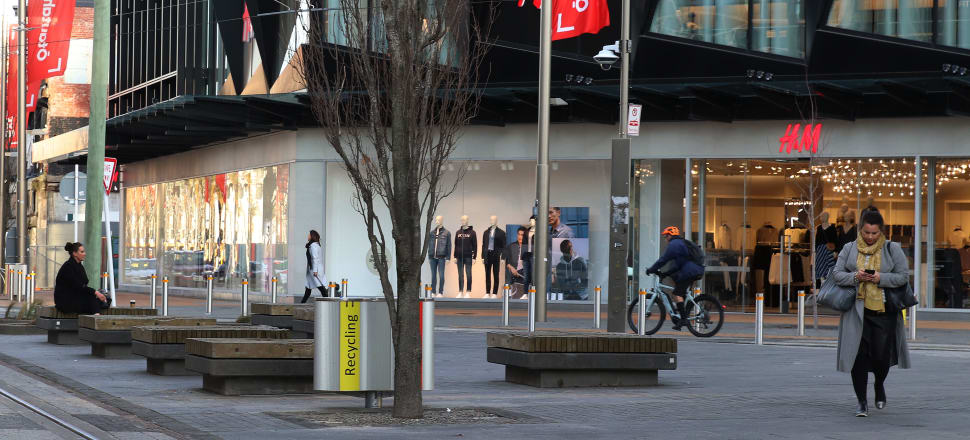
While economists are expecting further contraction of the NZ economy this year, opinions vary as to how bad things could get
The Reserve Bank has achieved the recession it has been seeking to engineer – though only by the barest of margins.
As expected, the Kiwi economy contracted for a second consecutive quarter, after recording a decline in output over the first quarter of 0.1 percent, while the final quarter of last year was revised down slightly to -0.7 percent (from -0.6 percent).
While meeting the conventional definition of a recession (two consecutive quarters of negative economic growth) it hardly feels like one. Record low unemployment, little obvious sign of mortgage stress, and business failures remaining relatively contained might mean this recession could be deemed, at least for now, and for those born before 1970, a ‘Claytons recession’ – one you have when you’re not having a recession.
READ MORE: * There has to be a better way to measure a recession * NZ's economic scorecard to deliver verdict on recession
However, it’s early days and further contractions are probably still to come. The question uppermost in investors’ minds will be: how bad could things get and as with most current economic forecasting the answer is likely to be: it depends.
Infometrics economist Gareth Kiernan believes strong net migration and population growth will prevent the headline GDP results getting as weak as might otherwise occur over the next few quarters.
“Although GDP has declined 0.8 percent over the last six months, the per-capita contraction of 2.0 percent is on a par with 2008/09, at the height of the global financial crisis.
Though there were few surprises in the latest Statistics NZ data, the report did highlight a continuation of the down trend evident in the previous quarter.
Business services continued to weaken and manufacturing posted another hefty decline, with the cyclone and flooding earlier in the year negatively affecting agriculture.
Although rental, hiring and real-estate services enjoyed a strong quarter, up 0.7 percent, largely because of migration inflows, household consumption – excluding durables – fell by 3.4 percent, suggesting higher interest rates, falling house prices and the cost of living crisis is taking its toll on household budgets.
Spending on durables fell 11 percent from a year ago, the largest fall since 1990, while the 6 percent annual decline in spending on non-durables is the largest on record (back to 1988, both figures excluding lockdowns).
Exports also shrank by 2.5 percent from the December quarter, with forestry exports appearing to be particularly hard hit by Cyclone Gabrielle and a downturn in demand from China. Log export volumes fell 14 percent from the December quarter, while wood and paper exports declined 12 percent (seasonally adjusted).
Kiwibank chief economist Jarrod Kerr said the latest economic scorecard didn’t come as a surprise, though the decline in tax revenue did.
“The weakness in the economy confirms our stance. We have highlighted the downside risks since last year. And the weakness is now coming through. The RBNZ may have done too much to rein in inflation. Time will tell. But the downside risks outweigh the upside risks.”
He says the outlook remains “awkward”, to put it politely.
“We expect further contractions in economic activity over 2023, and possibly into 2024. Government tax revenues have come in well below forecast, with both GST and corporate tax undershooting. The downshift in the Government’s coffers confirms the reduction in spending [we’re seeing] on Kiwibank credit and debit cards.”
As household consumption contracts and confidence among businesses and households remains low, he says demand is being weighed down by rising interest rates.
“If households continue to spend less, which is what we are seeing, then the economy will contract harder. If businesses pull back on their hiring and investment intentions, which is what we’re hearing, then this will only further weaken economic growth.”
The forecast slowdown is also expected to drive a loosening in the labour market and comes at a time when a migrant-led increase in labour supply is coinciding with falling demand, which Kerr believes will see the unemployment rate rising above 5 percent in 2024.
“At the end of the day, it’s all about inflation. Imported inflation is easing, but it’s homegrown inflation that concerns the Reserve Bank. Inflation is only forecast to fall below 3 percent late in 2024. It’s still a long journey back to the RBNZ’s 2 percent target, but at least we’ve started.”
Markets cheer latest Federal Reserve decision
The NZ sharemarket managed to arrest a decline that at one point last week saw it fall almost 5 percent.
The NZX50 finished the week up 0.9 percent at 11,800 as global markets responded positively to the Federal Reserve’s latest decision to pause on further interest rate hikes – at least for now.
Retail stocks remain under pressure, with shares in Briscoes Group falling to an 18-month low of $4.05 last week, and fellow retailers KMD Brands and Hallenstein Glasson Holdings fell to lows of $1.03 and $5.85 respectively.
In the US, stocks recorded their biggest weekly gain since March, as investors bet the central bank’s aggressive campaign of interest rate rises is almost at an end.
The benchmark S&P 500 index finished the week with a healthy gain of 2.6 percent. By Thursday's close it had advanced for six consecutive sessions – its longest winning streak since November 2021.
The tech-heavy Nasdaq Composite also continued to push higher, gaining 3.2 percent for the week, its biggest advance since mid-March.
After pausing its relentless campaign of interest rate rises for the first time in more than a year, America’s central bank warned of two possible interest rate hikes still to come. However, weak economic data on Thursday added to investors’ hopes these increases might not be required as the US economy cools.
“Market expectations and Federal Reserve expectations for where the economy is heading are moving in different directions”, James Knightley, chief international economist at ING, told the Financial Times.
“Futures contracts [are] not even fully discounting one hike, let alone the two that the Fed are currently projecting,” he said.
Investors have priced in a 72 percent probability that the Fed will go ahead with another quarter-point increase at the next policy meeting in July, according to data compiled by Refinitiv and based on interest rate derivatives prices.
The yield on two-year US Treasury notes rose 0.08 percentage points to 4.73 per cent on Friday. The yield on the benchmark 10-year added 0.04 percentage points to 3.77 per cent. Bond yields rise as prices fall.
Analysts have also pointed out that what makes the recent rally particularly notable is that investors can also find solid returns in Treasuries and other debt markets for the first time in more than a decade.
The gains for US stocks have also come against a backdrop of big moves from other global central banks that paint a picture of still-challenging conditions in other parts of the world.
On Thursday the European Central Bank raised interest rates to their highest level since 2001 and hinted at further policy tightening to combat stubbornly high inflation, and China’s central bank cut a key interest rate in response to the softening post-Covid recovery in the world’s second-biggest economy.
Oil prices rose, with Brent crude futures gaining 1.7 percent for the week to US$76.61 a barrel, and the gold price eased slightly to US$1958 an ounce.
The NZ dollar ended the week with a gain of 1.8 percent at 62.4 US cents.
Tourism rebound narrows current account deficit
A strong rebound in international visitor numbers has helped to narrow a record current account deficit, beating expectations of a further decline.
Statistics NZ’s balance of payments data series showed the current account – which captures trade in goods and services and net income flows – recorded a deficit of $33 billion in the 12 months ended March 31, or 8.5 percent of gross domestic product, narrowing slightly from the record shortfall of almost $35 billion or 9 percent of GDP, at the end of December.
Tourism operators have been enjoying a stronger-than-expected recovery in international visitor numbers, although figures showed a dip in arrivals for the month of April.
The revival in international travel, both for locals departing and foreigners arriving, lifted in the March quarter, helping deliver the first quarterly services surplus since March 2020, with services exports of $7.36 billion in the quarter, more than the $7.21b of services imports.
The March quarter’s seasonally adjusted current account deficit was $5.22b, narrowing from a deficit of $10.07b in the December quarter. The March quarter’s goods balance remained in deficit at $2.72b, with imports of $19.59b and exports of $16.87b.
House price falls continue, but pockets of recovery emerge
The latest Real Estate Institute of NZ house price index eased 11.2 percent year-on-year in May, although pockets of recovery are starting to emerge with listings showing a modest improvement.
The index is down 18 percent nationally from the November 2021 price peak, although still up 5.4 percent over the past five years.
Listings improved 3 percent from the prior month but remained well down on a year ago.
Institute chief executive Jen Baird said the glimmers of a regional bounce back followed the Reserve Bank's easing of loan-to-value ratio restrictions (LVR) and the stabilising of interest rates, albeit at their highest levels since December 2008.
The RBNZ confirmed it will ease LVR restrictions last month. Accordingly, banks will be able to move from approving 10 percent of loans with an LVR above 80 percent for owner-occupiers to 15 percent, while the 5 percent limit for investor loans with LVRs above 60 percent will change to above 65 percent.







